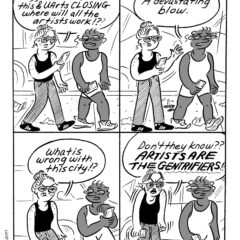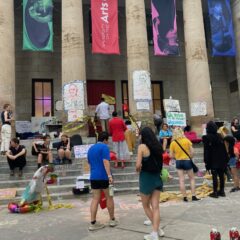Alex Da Corte: The Street (January 13-March 10, 2023) at The University of the Arts’ (UArts) Rosenwald-Wolf Gallery is a popular culture tour deforce. Da Cortes’ reverse paintings on glass, also known as Hinterglasmalerei in German, a mix of colors, styles, and vernacular references, are hung tightly in the galleries over walls painted top to bottom with shifting colorful designs. As well, Da Corte has placed objects throughout that possess ancillary pop references, like simplified protest signs, neon lights and bricks, in a mute and uncritical nod to our times and troubles.
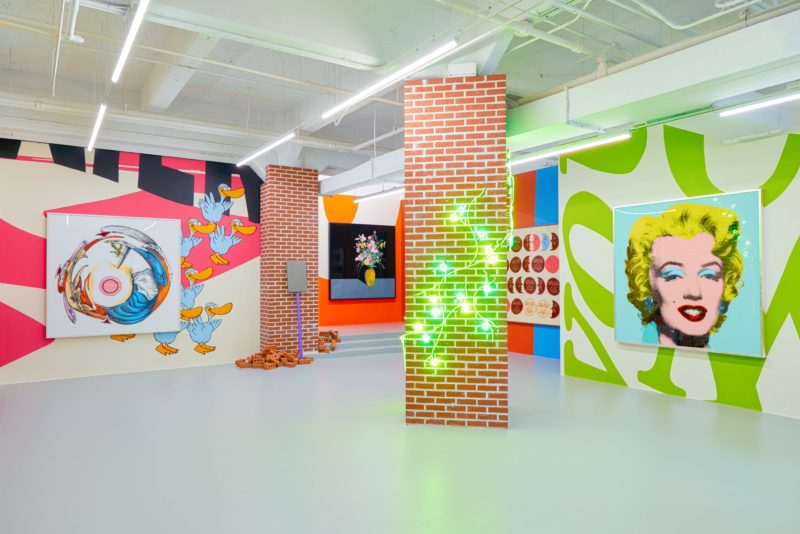
At the crowded opening I saw chaos, but when I went back for the gallery tour, I was able to see the installation’s overpowering seduction. The 12 large paintings, especially, give the sense that each work, as complicated as it is to paint in reverse, is about the making, while also testing and underlining your knowledge of pop culture. Works like The Last House on the Left (2022), a triptych of 13 lamps painted on into a rich black background asks “Did you ever see the side of that building with the paintings of the lamps?” The diptych titled The Wages of Sin, Two Women and a Bully (2022-2023) featuring the cover of a R. L. Stine’s Fear Street series of Young Adult horror novels, and the two vultures from Snow White and The Seven Dwarves (2022-2023) asks, “Did you read that book; see that animation, were you as disturbed then as you are now?” While Alex Sings the Blues (2022) removes a key figure, yet still asks, “Do you remember that Sesame Street episode?” And because the show is anchored by one of the most familiar images in art history, here dubbed Mirror Marilyn (2022-2023), and because we can’t forget Marilyn or Andy, we are clued into the fact that everything in the exhibition is part of our collective cultural memories. And like nostalgia for a time long gone, the works hold us in the past.
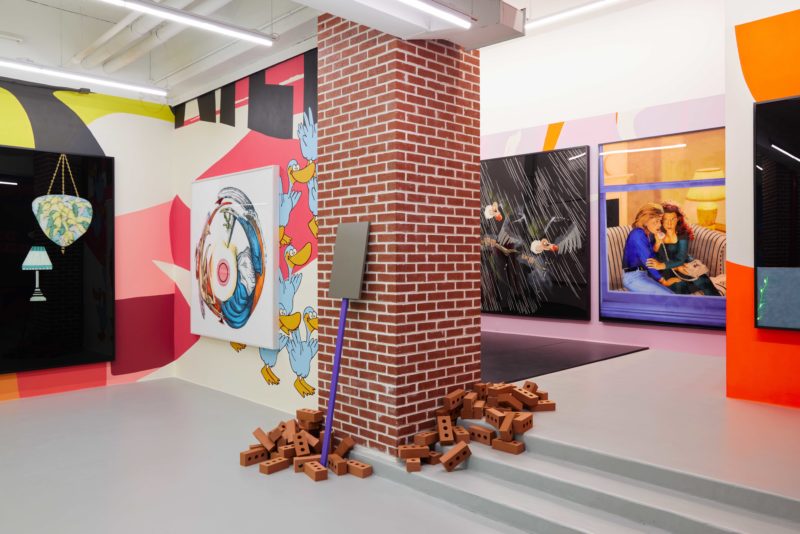
Despite trying to see the discrete nature of each painting, everything in the show is as one work. According to the gallery press release “The Street references Venturi, [and] Scott Brown’s Main Street and the Information Highway,” all later postmodern ideas about information and place that we may think of as quaint now in the age of social media, yet are manifest in our ability to access and be informed correctly or not. The exhibition echoes this idea in its incessant and compelling stream of images and ideas. This effect is charged by the rhythmic designs covering the walls, some of which are immediately recognizable, while others are obscure and obscured by the layout of the show.
One thing is clear about De Corte, he is a patient and tactical creator. This is not to say he lacks spontaneity, for clearly his work at Rosenwald-Wolf shows his acumen at translating ideas into form. This is underscored by the fact Da Corte agreed to do the exhibit on short notice after the show scheduled to open on January 13 was canceled. Da Corte said during the tour that he had started the series a while back and that it is a large series that has no limit, in fact he plans to work on it for some time.
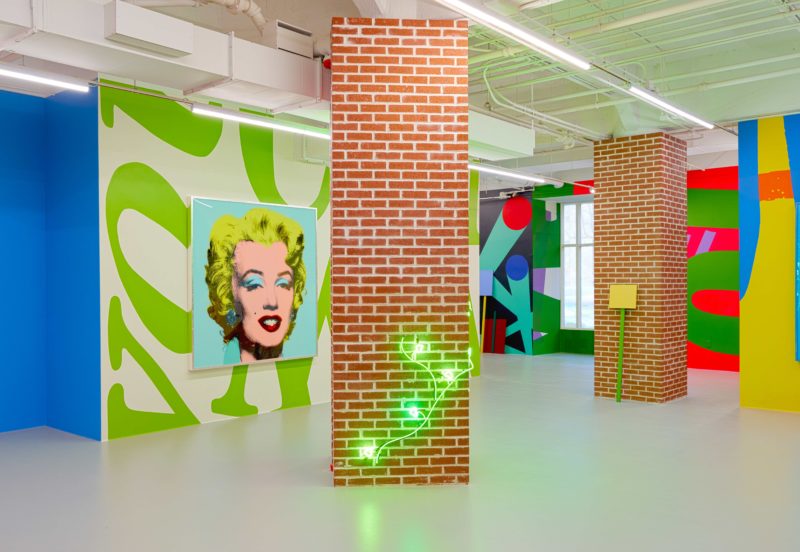
So, although there is this sense throughout that the work is familiar, and at the same time at a distance, the colorful and overlapping nature of the exhibit is, instead of comforting, a dizzying experience, perhaps appropriately so, given our immersed abandon in digital technology. The works may look obvious at first glance, but are thought experiments exploring what is actually there. And while the show demonstrates key features of Pop Art, like the stand-in, the altered but familiar image, the mundane object, and the appropriated image; they nod to the influences and ideas in our current time. The banality of the subjects coupled with the pressure of the staging conflates the theatricality of Minimalism, as defined by Michael Fried, in a way that traditional Pop Art would not. Without the critique inherent in Pop Art, Da Corte’s approach reveals the unvarnished, frenetic and sustained nature of popular culture, while also celebrating its excesses.
In The Street, Da Corte has produced an exhibition that speaks to the pressure between looking and seeing; attention and distraction, analog and digital, built up over the last two decades. These dichotomies, embedded in the work and our relationship to it, are uncritical and place us within the distraction producing spectacle that is the digital age.



